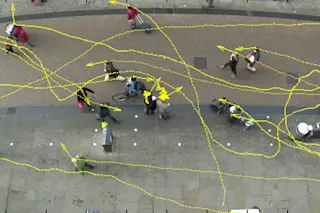On an uneventful day, five passers-by in busy Oxford shopping street suddenly stop and look upwards. They have spotted a camera mounted on a nearby roof, pointed straight at them. But these aren’t strangers who have suddenly realised that Big Brother is watching them. They are actors, who are taking part in a natural experiment that looks at how information spreads through crowds of people.
Andrew Gallup from Princeton University is behind the camera. Using its lens, and technology based on the video-gaming graphics cards, he can track the movement of each pedestrian, and calculate where they’re looking. With this set-up confirmed that people have a natural tendency to look where others are looking. But this contagion of glancing is much weaker than popular psychology books would have us believe.
Many psychologists have studied how humans and other animals follow each others’ gazes. But the vast majority of these studies ...














